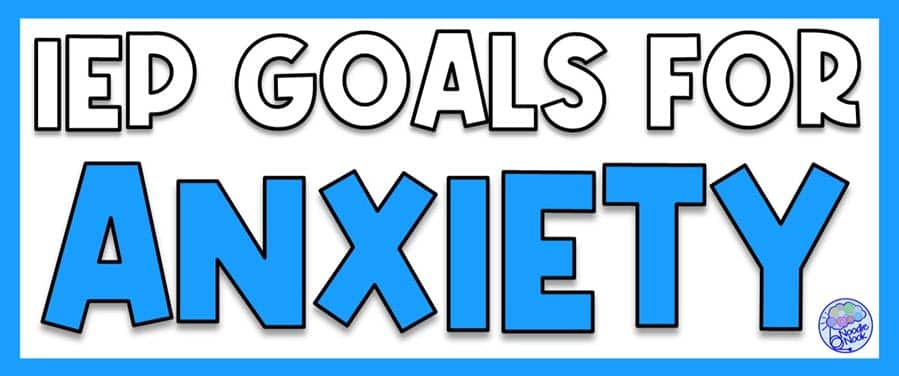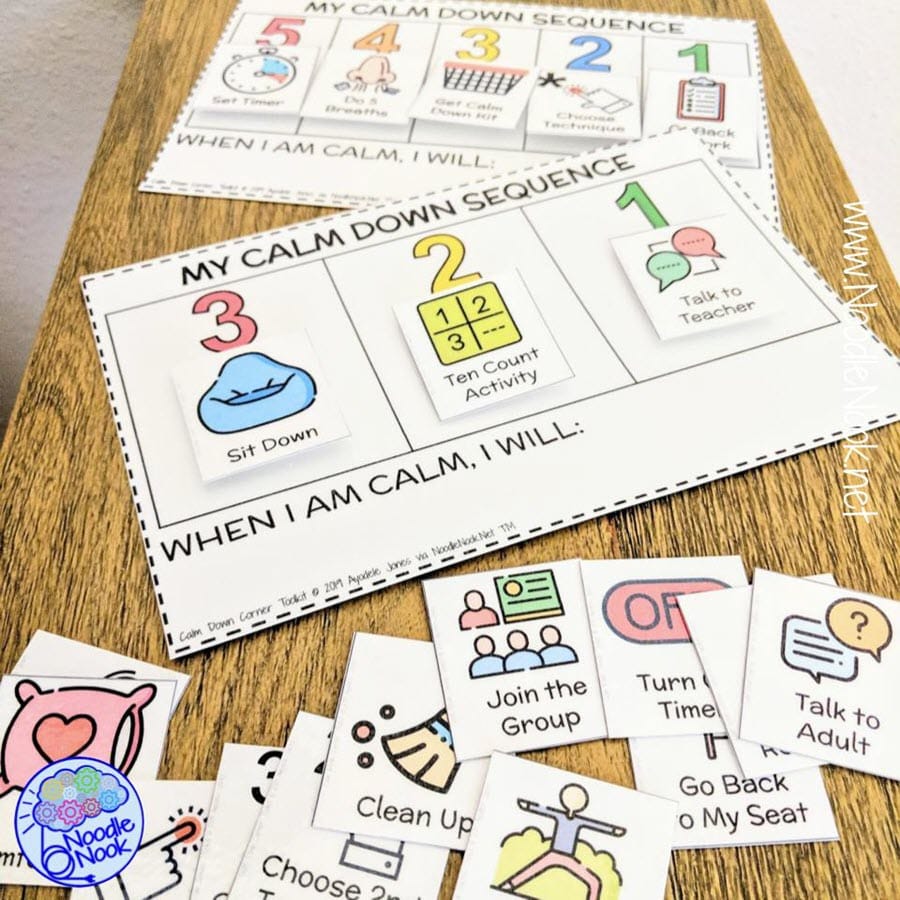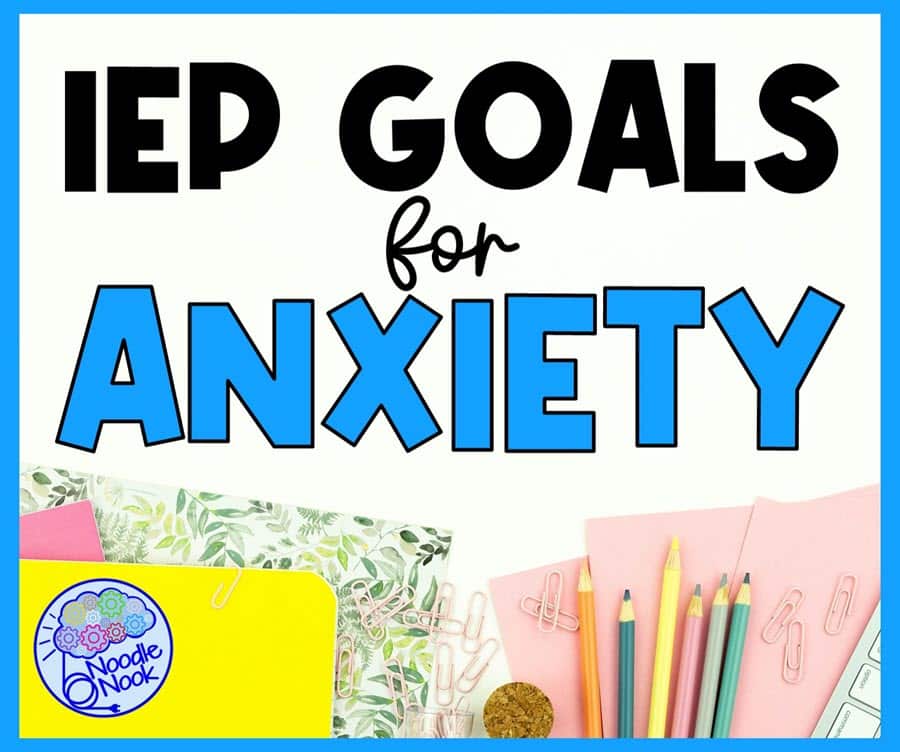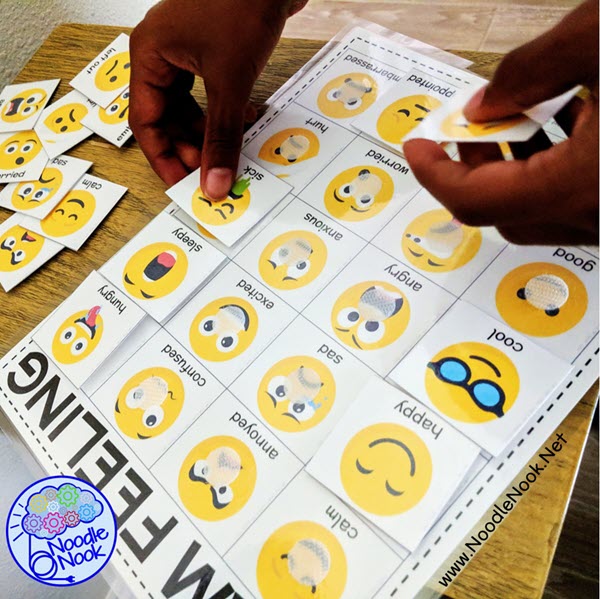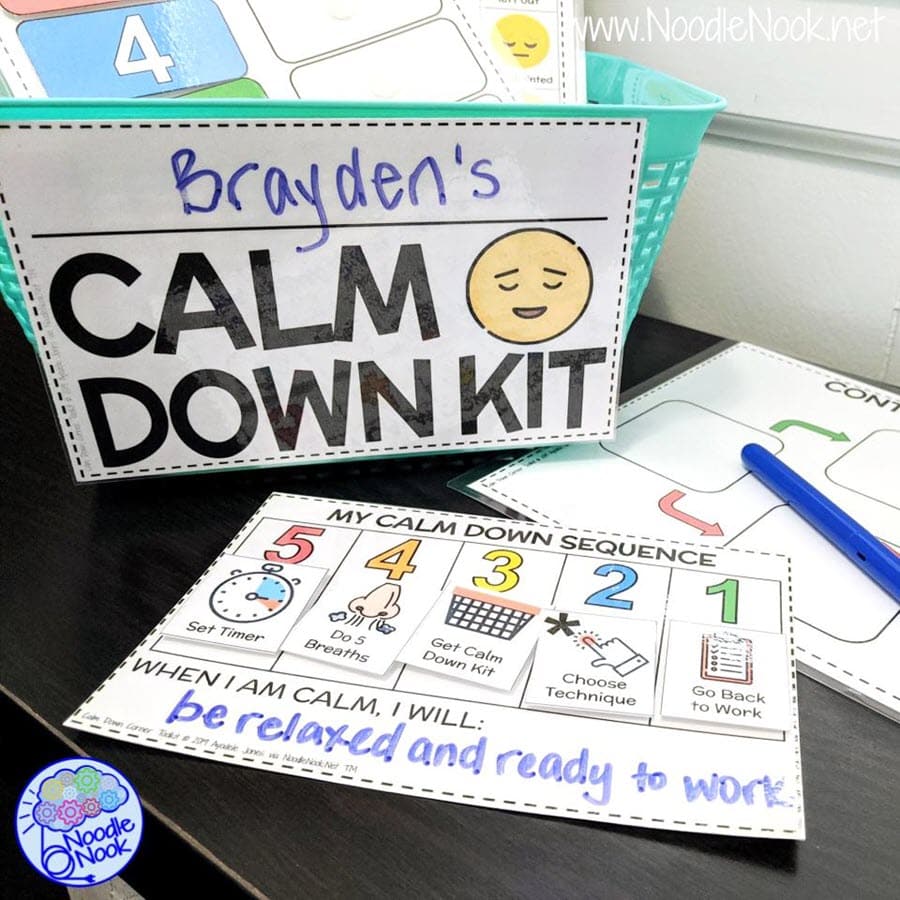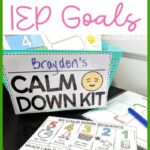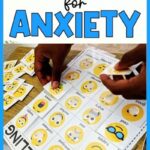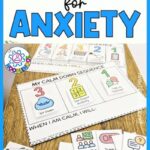These days, we are all a little bit anxious. As a teacher, you can see signs of anxiety in the classroom with your students every day. Unfortunately, for students with more significant disabilities, addressing this anxiety is critical to curbing undesired behaviors. Implementing IEP goals for anxiety can address these behaviors and also build positive coping skills as the student transitions into adult life. If you are a special education teacher looking for ideas on meaningful IEP goals for anxiety and strategies to address anxiousness in the classroom, we’ve got you covered.
What is an IEP
An Individualized Education Program (IEP) is a written document that outlines the educational goals and objectives for a student with a disability. It is developed by a team of people that includes the student’s family, teachers, and other professionals.
The IEP outlines the types of services and accommodations the student will receive, such as resource classes, special education services, and modifications to the curriculum. It also outlines how the student’s progress will be monitored, and how the student’s individual needs will be met.
For students with anxiety or other challenges that impact behavior, an individualized behavior intervention plan may be added to the IEP. It’s drafted after a formal behavior analysis is completed.
Both the behavior plan and the IEP are reviewed and updated regularly to ensure they continue meeting the student’s needs.
What Does Anxiety Look Like for Students with Disabilities?
Anxiety can manifest in different ways in students with disabilities. Common signs of anxiety in students with disabilities may include:
- difficulty concentrating
- avoiding conversations or social situations
- difficulty sleeping
- restlessness, irritability
- difficulty controlling emotions
- physical symptoms such as sweating or a racing heart
- difficulty completing tasks
Students with disabilities may also experience a heightened sense of worry, fear, or panic in certain situations. It is important to monitor students with disabilities closely and provide resources to help them manage their anxiety. This is to keep the student safe and also to prevent negative or disruptive behaviors in the classroom.
What are Different Types of Anxiety Disorders
Anxiety disorders are mental health conditions that cause people to experience intense fear, worry, and unease. Common types of anxiety disorders include Generalized Anxiety Disorder (GAD), Panic Disorder, Social Anxiety Disorder, and various Phobia-related Disorders (CDC, 2022).
- Generalized Anxiety Disorder is characterized by persistent and excessive worry and fear about events or activities, even when there is nothing to worry about.
- Panic Disorder is an intense fear or terror that comes on suddenly and often without warning or cause.
- Social Anxiety Disorder is characterized by intense fear or anxiety of social situations or interactions, due to fear of being judged or embarrassed.
- Phobia-related Disorders are characterized by an intense fear of specific objects or situations, such as heights, flying, animals, or crowded spaces.
Anxiety disorders do cover a broad range of mental health conditions that go beyond this shortlist. These are just some of the most common. Most anxiety disorders, though, are characterized by intense fear, worry, and unease.
How Does Anxiety Manifest in Students with Disabilities
Anxiety in students with disabilities may manifest in a variety of ways, including difficulty controlling emotions, difficulty concentrating, restlessness, avoidance of social situations, physical symptoms such as sweating or a racing heart, difficulty sleeping, and difficulty completing tasks.
As a teacher, it’s important for you to monitor students with disabilities closely and provide resources to help them manage their anxiety. In the classroom, try providing a calm down corner with calming activities or sensory tools to help students with anxiety. You’ll also want to create a predictable and safe classroom environment. Read more below on specific strategies you can use to address anxiety.
How Common is Anxiety in Special Ed?
Anxiety is one of the most common issues faced by students in special ed. According to the National Alliance on Mental Illness, one in five children aged 13 to 18 will experience an anxiety disorder, and this rate is even higher for children with special needs (Eulberg, n.d.).
On top of that, research has shown that students with disabilities are two to three times more likely than their peers without disabilities to suffer from anxiety-related disorders. That means it’s especially important for special ed teachers to be aware of the signs of anxiety and to look out for symptoms that may point to an anxiety disorder.
Think about a student with a disability who may have limited skills or additional challenges related to communication. This can easily lead to feelings of isolation and frustration. They may have challenges understanding their emotions, and this can lead to distress as well. Finally, they may have a more difficult time making interpersonal connections with others or maintaining relationships. That added feeling of disconnection or ‘otherness’ can trigger feelings of anxiety.
Anxiety issues can be caused by a variety of factors, including the impact of the disability itself, social and environmental factors, and biological factors. Students with disabilities may also be more prone to developing anxiety, due to the added stress and strain of living with a disability.
How Do You Address Anxiety in the Classroom?
As a special education teacher, you’ll want to address anxiety in the classroom in order to ensure that all students are able to learn and participate in the classroom environment. When helping students manage anxiety at school, it’s important to consider the following:
- Identifying and Managing Anxiety Triggers:
- Identify potential triggers of anxiety and create strategies to help the student manage and cope with them.
- Work with the student to develop a plan for recognizing and managing anxiety triggers, such as deep breathing, positive self-talk, or taking a break.
- Consider the impact of sensory issues, such as noise or bright lights, on anxiety levels and make adjustments to the classroom environment as needed.
- Addressing Communication and Social Interaction:
- Develop a plan for communicating in a prosocial or positive manner when the student needs help.
- Allow students to work in flexible groups, which may include independent tasks during small group instruction.
- Build social-emotional learning into instructional tasks in the classroom.
- Provide students with developmental disabilities, autism spectrum disorders, or other disabilities with additional visual or verbal cues and adult reminders.
- Supporting Coping Strategies:
- Provide opportunities for the student to practice calming and self-soothing techniques.
- Use skill building for students to better identify and cope with stressful situations.
- Incorporate a brain break or movement break in your classroom to help reduce the level of anxiety between or during academic tasks.
- Create a consistent and predictable daily routine to reduce stress and anxiety.
- Reinforcement and Support:
- Establish positive reinforcement strategies to encourage the student to engage in positive behaviors.
- Create a plan for providing the student with support from family, teachers, and other professionals when necessary (which may include counseling sessions).
- Adjust work demands when presented with withdrawn behavior or task avoidance.
- Provide students with specific objectives or strategies during unstructured playtime.
By providing a child with guidance in identifying and managing anxiety, addressing communication and social interactions, supporting coping strategies and, finally, by providing lots of reinforcement and support, you can better manage anxiety in the classroom.
Skills to Develop Appropriate Coping Strategies
There are several underlying skills that can help students deal with internal feelings, frustrating situations, or the negative thoughts that accompany anxiety. Teaching these skills to students may prevent a little problem from becoming a big problem.
Here are several supportive skills that students can develop as a way to address issues with anxiety:
- Identifying triggers and developing coping strategies
- Use appropriate coping skills when presented with an undesired task
- Participating in relaxation techniques, like deep breathing
- Use positive self-talk worksheets or systems when presented with unexpected obstacles or a negative mindset
- Practice daily reinforcement through positive affirmations
- Improving social skills to decrease isolation
- Increasing communication skills to express anxiety and ask for help
- Requesting a quiet space break to focus on getting a calm body
- Use of a visual self-rating system, use of self-regulation strategies, or use of an appropriate fidget as part of his self-monitoring system
- Participating in a heavy work activity or receiving deep pressure when coping with frustrating situations
- Role playing scenarios of social conflicts
- Using coping strategies in response to undesired peer behavior
Working proactively so students with anxiety can better cope with unexpected emotional state changes can help your student learn lifelong coping skills. It will also help your classroom to be more inclusive and responsive.
IEP Goals for Anxiety
In order to address a student’s needs related to anxiety, establish clear and specific goals within the IEP. These goals should be SMART (Specific, Measurable, Achievable, Relevant, and Time-bound) and should be tailored to the individual student’s needs. They should also be strategies and skills you actively teach and that are achievable goals given the student and the timeframe.
Here are some examples of IEP goals for addressing anxiety:
- Jayden will demonstrate an understanding of the relationship between his thoughts, feelings, and behaviors related to anxiety in 4 out of 5 opportunities by…
- Deja will identify three strategies to cope with anxiety in 4 out of 5 opportunities.
- Jose will recognize and label feelings of anxiety in 4 out of 5 opportunities.
- Brayden will practice deep breathing techniques for 3 minutes in 3 out of 5 opportunities to manage feelings of anxiety.
- Emma will describe her personal support system for managing anxiety in 4 out of 5 opportunities.
This, obviously, is not a comprehensive list. These are just some ideas on IEP goals for anxiety. Use the skills listed above to identify what areas your student needs to improve with in order to better deal with frustrating situations and emotional regulation.
Why Goals Need to be Observable and Measurable
How many times have you read a behavior-related goal only to find that it’s completely not measurable? For an IEP goal, being measurable means you can easily count (or measure) the target behavior. Likewise, you’ll need the behavior to be observable. After all, you have to be able to see it in order to count it.
If a goal is an “absence” goal, then it’s not well written. Goals that want students to ‘refrain’ don’t work because we can’t count it or measure it. Consider a goal like “Lisa will refrain from screaming when anxious in 3 out of 5 opportunities”. This goal cannot be seen, which means it can’t be measured.
How can you see when Lisa is refraining?
Exactly.
As you draft goals, be very mindful of how well you can observe and measure the target behavior. Moreover, think about whether another person who is not familiar with the student can see and identify the target behavior as it is written in the goal as well as understand how it’s supposed to be measured.
Implementing IEP Goals for Anxiety
Implementing goals for anxiety in the classroom starts with creating a supportive and understanding environment. You want to make the classroom free from distractions. You’ll also want to create a space where students feel safe and accepted.
You can start by providing students with clear instructions and identifying expectations. As student work and interact, provide consistent and positive reinforcement for appropriate behavior.
Directly teach students strategies and how to use the tools they have available to them as a means of identifying and managing their anxiety. This could include things like relaxation techniques, deep breathing exercises, journaling, and positive self-talk.
With all those things in place, you can also implement these things:
- Consistent monitoring and assessment of progress with solid data collection
- Adjusting goals as necessary to ensure success
- Providing frequent positive reinforcement and corrective feedback
- Incorporating classroom accommodations and modifications to support the student’s needs
As the goal is implemented, use consistent and objective teacher observations to determine if the goal is helping to develop an appropriate emotional response to anxiety as well as improve the unexpected behavior that accompanies anxiousness.
What to Do Next…
As you work to improve the self-regulation skills of students with disabilities by targeting IEP goals for anxiety, there are three things you can do. First, look at the educational environment and decide if the student is dealing with any unexpected obstacle that can be addressed in the physical space. Then consider teaching the use of self-monitoring checklists or reflection tools to help a student assess their emotions and feelings. Finally, target a coping strategy that a student can use in most situations and work towards a student developing appropriate strategies for dealing with anxiety.
You may need extra help from other school staff members, like teachers, paraeducators, school counseling team, or administrators so a student is supported throughout the campus, not just in your classroom.
By understanding the unique needs of students with severe and profound disabilities and creating an IEP that takes these needs into consideration, special education teachers can help their students manage anxiety. By creating effective IEP goals and providing the student with the necessary support, teachers can help their students with anxiety to be successful and cope with anxiety in their adult lives.
References
CDC. (2022, 04 19). Anxiety and Depression in Children. (National Center on Birth Defects and Developmental Disabilities) Retrieved 02 16, 2023, from CDC: https://www.cdc.gov/childrensmentalhealth/depression.html
Eulberg, J. (n.d.). Follow These Steps to Ease Student Anxiety in Your Classroom. (W. G. University) Retrieved from Hey Teach!: https://www.wgu.edu/heyteach/article/follow-these-steps-ease-student-anxiety-your-classroom1809.html
Article Citation: [cite]
